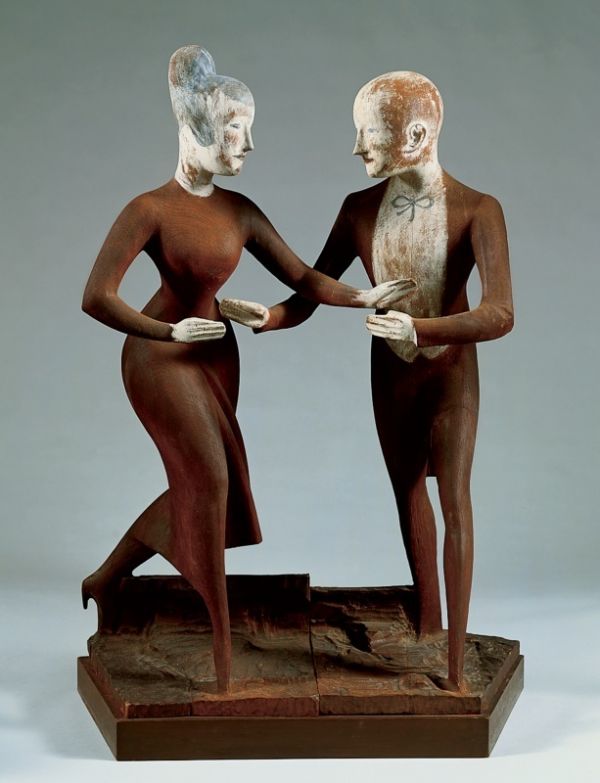The New-York Historical Society has a new exhibit featuring some of the Nadelmans’ collection. The Nadelmans' story is a crucial piece in the history of folk art: how it became not only popular, but a legitimate form of art in the U.S. and beyond. Read about them at Collectors Weekly.By the early 1920s, the couple had amassed the country’s largest collection of folk art and set out to establish a museum to house their objects. In 1924, they began cataloging their extensive collection and worked with an architect to construct a building for it on their property in Riverdale. The collection kept growing, so rapidly that they expanded the museum’s building before it was even complete.
Since art-making was Elie’s primary focus, managing the collection became Viola’s passion. The Museum of Folk and Peasant Arts opened in November of 1926 with Viola acting as director and taking on most organizational duties. As Olson and Hofer explain in their book, “the MFPA was not only the first museum in the United States devoted exclusively to folk art, but also the first in the world to demonstrate the European influences on American folk art.”
The Nadelmans organized their museum by medium with specific rooms devoted to materials like textiles or ironwork. “You’d have things like the wonderful French-Romanesque lions that are now at the Cloisters in the same room with weathervanes and tools like waffle irons,” Olson says, “and they were all hung in an aesthetically pleasing way.”
Welcome to ...
The place where the world comes together in honesty and mirth.
Windmills Tilted, Scared Cows Butchered, Lies Skewered on the Lance of Reality ... or something to that effect.
Windmills Tilted, Scared Cows Butchered, Lies Skewered on the Lance of Reality ... or something to that effect.
Tuesday, January 26, 2016
How 'Folk Art' Challenged the Art World to Get Real
Exactly
what "folk art" consists of was debated when it arose in the early 20th
century, although the simplest definition for the term is art produced
by those without formal training. We also don’t know who came up with
the term, but two early adopters were Viola and Elie Nadelman, who
collected such art and displayed it in their Museum of Folk and Peasant
Arts in Riverdale, New York, from 1926 to 1937. The word "peasant" was
dropped when it became evident that Americans didn’t like it. "Peasant
art" was the European term for objects that were both decorative and
functional.
Subscribe to:
Post Comments (Atom)


No comments:
Post a Comment